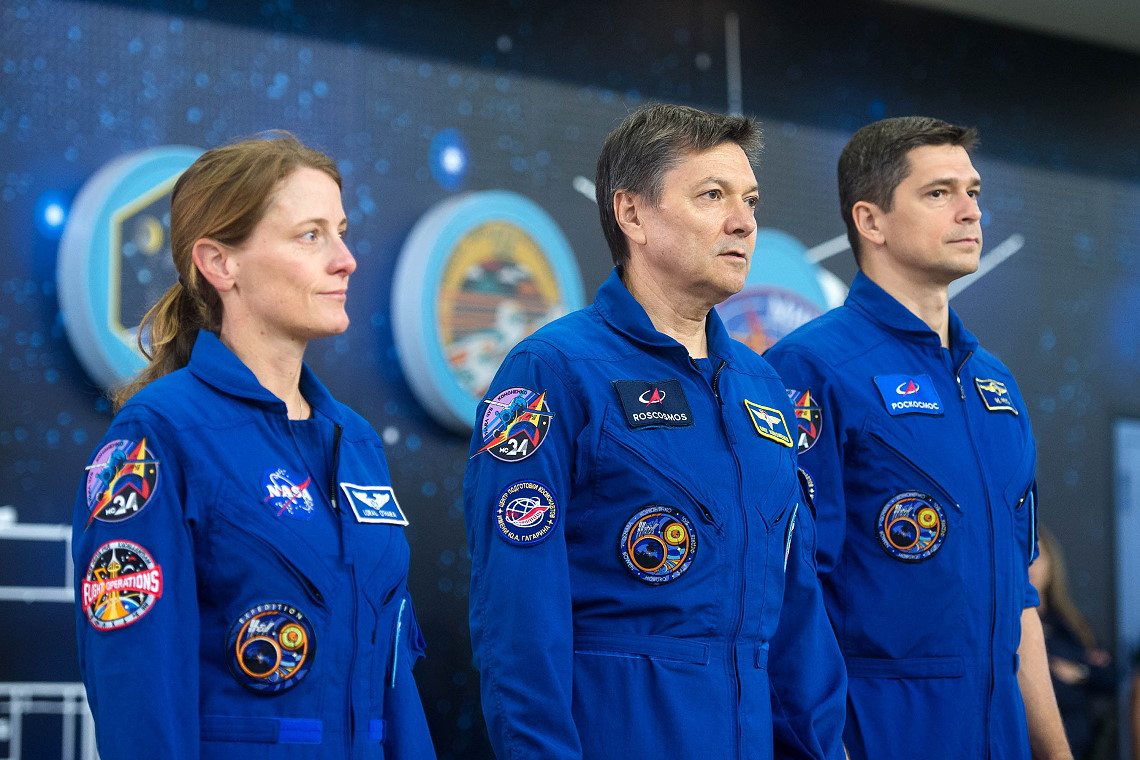
Three spacefarers from Russia and the United States will fly six months later than intended on Friday, 15 September, when Soyuz MS-24 launches from the Baikonur Cosmodrome in Kazakhstan to set the final pieces in place on the International Space Station (ISS) for a busy Expedition 70. NASA astronaut Loral O’Hara—originally scheduled to fly aboard Soyuz MS-23 in March, before all missions shifted one flight to the right—will be accompanied by seasoned cosmonaut Oleg Kononenko, currently the world’s sixth most experienced spacefarer, and fellow “rookie” Nikolai Chub.
Based on current plans, Kononenko and Chub will spend a full year aboard the sprawling orbital complex, returning to Earth aboard Soyuz MS-26 in September 2024. Assuming that schedule holds, it will make them the seventh and eighth humans to pass a cumulative 365 days in orbit on a single mission and should establish Kononenko—who presently boasts 736 days across his four prior flights—as the world’s most experienced spacefarer, the first person to cross 1,000 days off the Home Planet.
Their long mission has been enabled thanks to plans to fly Belarusian cosmonaut Marina Vasilevskaya on Soyuz MS-25 next March for a short, week-long stay on the ISS. Her commander on that flight, expected to be veteran cosmonaut Oleg Novitsky, will fly to and from space shoulder-to-shoulder with Vasilevskaya, and also returning home with the pair will be O’Hara, wrapping up six months aboard the orbital complex.
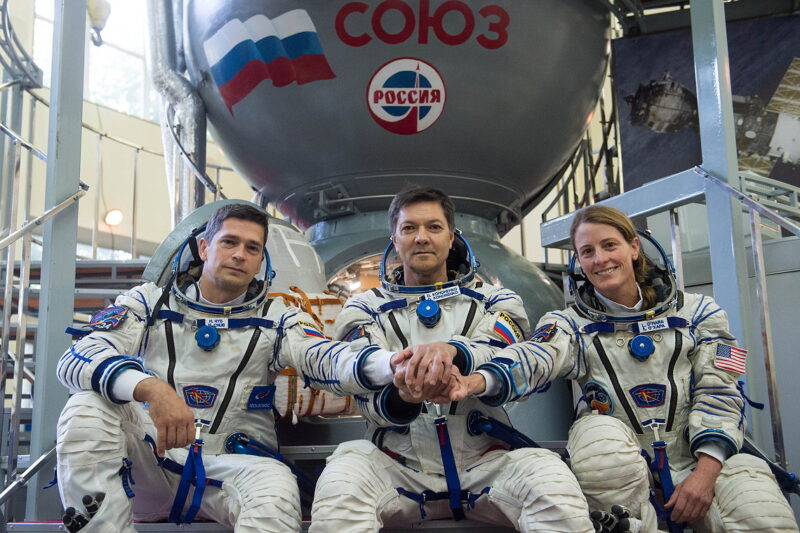
The result is that the Soyuz “return” seats which might ordinarily have been for Kononenko and Chub will thus be taken by Novitsky and Vasilevskaya, requiring the two cosmonauts to embark on an ultra-long-duration ISS marathon. During their stay, Kononenko and Chub may execute as many as four sessions of Extravehicular Activity (EVA)—a first as soon as next month, a second in December and two more in the first half of 2024—as Russia completes the integration of its Nauka (“Science”) research lab into the ISS.
Two U.S. spacewalks are also planned in the October timeframe. “One will be to collect surface samples of various areas of the U.S. segment for analysis of compound build-up,” explained NASA’s Rob Navias. “The other is to complete the retrieval of the Radio Frequency (RF) group hardware that could not be completed in a prior spacewalk.”
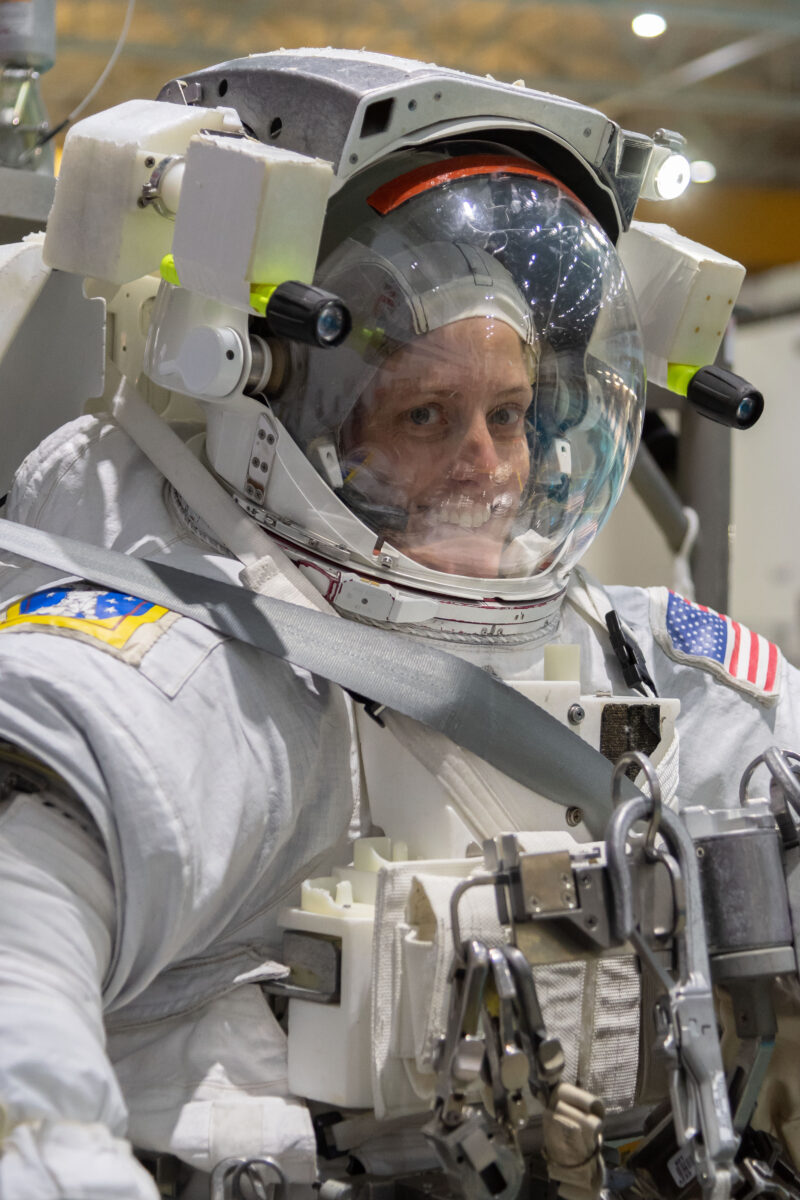
Next 4 February, Kononenko will exceed fellow cosmonaut Gennadi Padalka’s empirical career total of 878 days, established across five Mir and ISS long-duration stays between August 1998 and September 2015. And before the end of May 2024, he will become the first person in history to have spent 1,000 days—equal to about 33 months or nearly three years of a human lifetime—away from Planet Earth. Returning home in late September, Kononenko will push that lead still further to more than 1,100 days, which works out to almost 37 months or just a tad more than three full years.
Born in the Turkmen city of Chardzhou (today’s Türkmenabat) in October 1964, the 58-year-old Kononenko graduated from Kharkov Aviation Institute as a mechanical engineer with a specialism in aircraft engines. He later completed postgraduate studies at the Kuibyshev Aviation Institute, where he worked in automated control systems design before selection for cosmonaut training in 1996.
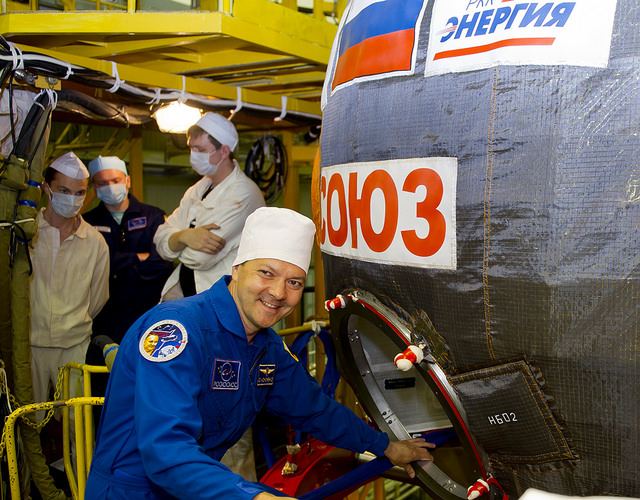
A lengthy wait for space ultimately saw Kononenko fly four long-duration ISS missions, the first in April-October 2008, a second from December 2011 to July 2012, a third between July and December of 2015 and a most recent increment from December 2018 through June of 2019. During his expansive career, he has made five EVAs, totaling over 32 cumulative spacewalking hours, a total Kononenko should double on his upcoming ISS stay.
Serving as Soyuz MS-24’s Flight Engineer One is 39-year-old Nikolai Chub, born in June 1984 in the Russian city of Novocherkassk. He graduated as an engineer from the South Russian State Technical University and is an accomplished parachutist and “wingsuit” formation-flyer. Chub entered the cosmonaut training program in October 2012 and, with Kononenko and O’Hara, served on Soyuz MS-22’s backup crew last fall.
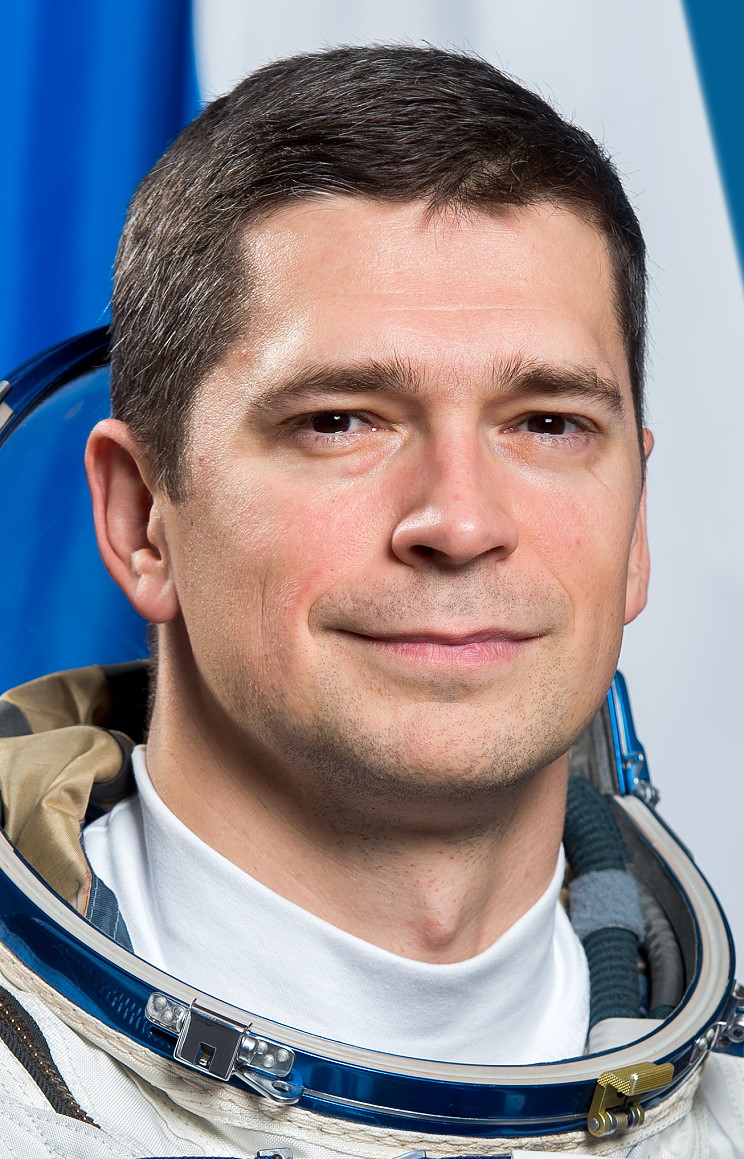
Sitting in the Flight Engineer-Two seat is NASA’s Loral O’Hara, born in Houston, Texas, in May 1983. Forty years old, she gained a bachelor’s degree in aerospace engineering from the University of Kansas and a master’s credential in aeronautics and astronautics from Purdue, also participating—whilst still an undergraduate—in NASA’s KC-135 Reduced Gravity Student Flight Opportunities Program at the Goddard Space Flight Center (GSFC) in Greenbelt, Md.
After graduation, O’Hara served as a research engineer at the Woods Hole Oceanographic Institution in Woods Hole, Mass. Selected into NASA’s June 2017 astronaut intake (“the Turtles”), she qualified for flight assignment two years later and has been in dedicated training for a Soyuz flight since 2021.
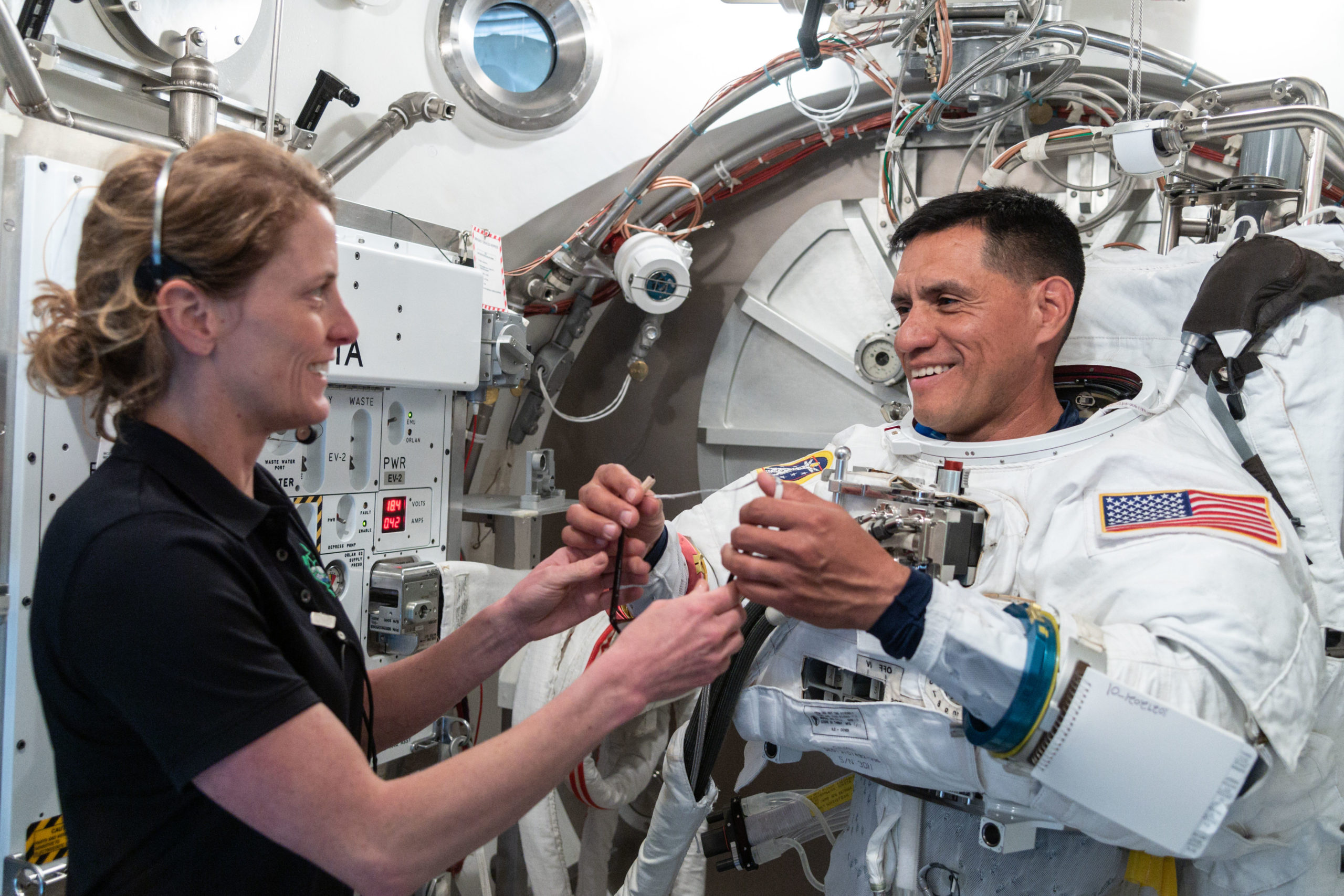
Backing up Kononenko, Chub and O’Hara were, originally, veteran cosmonaut Alexei Ovchinin, seasoned NASA astronaut Tracy Caldwell-Dyson and “rookie” Oleg Platonov. However, for reasons which remain unclear, Platonov was last month dropped from the Soyuz MS-24 backup crew, meaning that in the unlikely eventuality that the backups wind up flying the mission at the last moment, only two—Ovchinin and Caldwell-Dyson—will fly, rather than three, reducing Expedition 70 in size from seven to six members.
Kononenko, Chub and O’Hara were originally pointed to fly Soyuz MS-23 in March, but following the discovery of a leak in the on-orbit Soyuz MS-22 spacecraft last December, Roscosmos and NASA elected to fly MS-23 in an uncrewed capacity to provide return surety for for Russian cosmonauts Sergei Prokopyev and Dmitri Petelin and NASA’s Frank Rubio. As such, all subsequent crews moved one flight to the right and Kononenko, Chub and O’Hara wound up getting reassigned to Soyuz MS-24 in September.
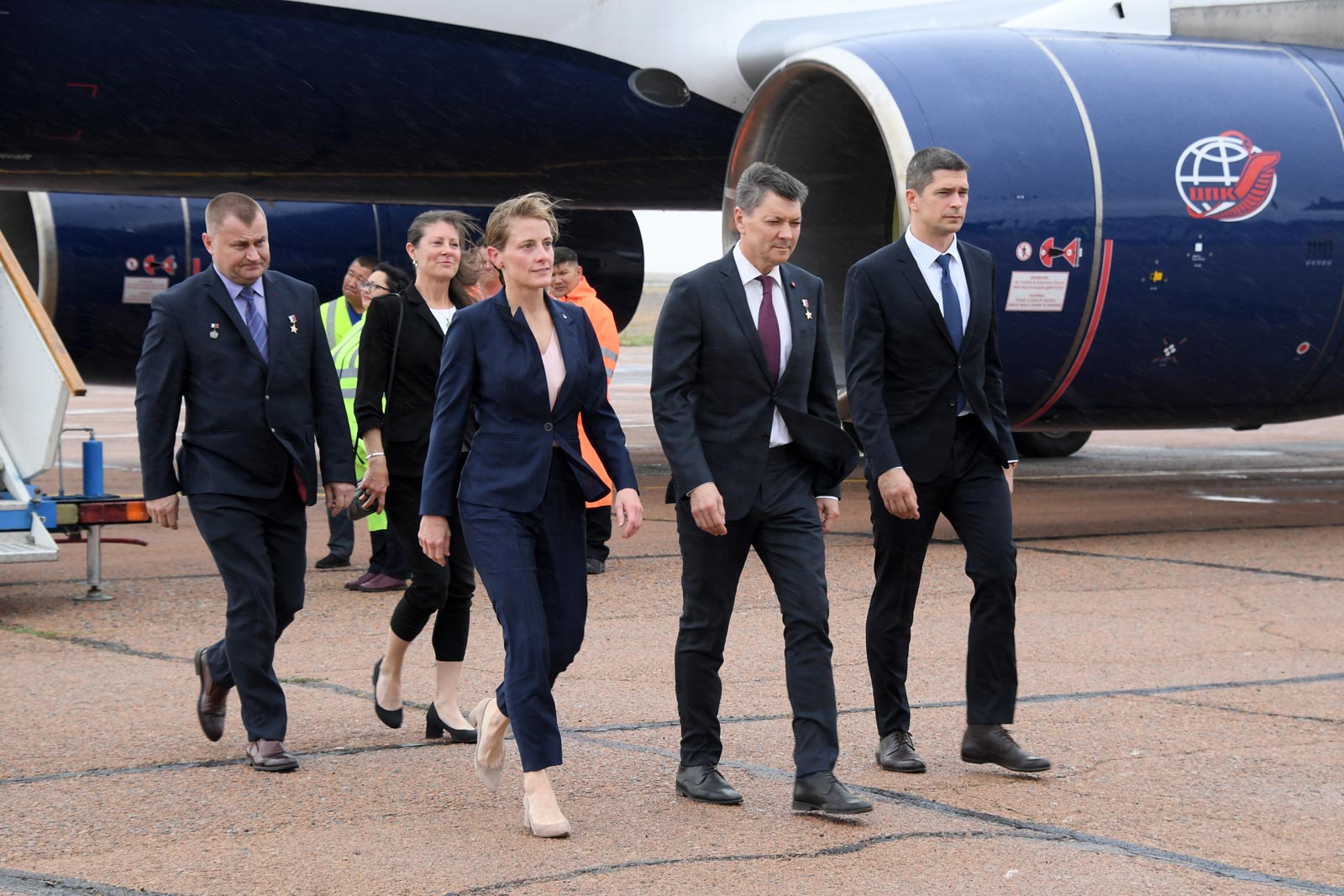
Liftoff is currently targeted for 8:44 p.m. Baikonur time (11:44 a.m. EDT) on Friday, 15 September, after which the three humans will spend a little more than three hours in transit to the ISS, docking at the station’s Earth-facing (or “nadir”) Rassvet port on their second orbit of the Home Planet. After pressurization and leak checks, Kononenko, Chub and O’Hara will be welcomed aboard by Expedition 69 Commander Sergei Prokopyev, his Russian crewmates Dmitri Petelin and Konstantin Borisov, Denmark’s Andreas Mogensen, Japan’s Satoshi Furukawa and NASA astronauts Frank Rubio and Jasmin Moghbeli.
Their time together will be short. Following a two-week handover, Prokopyev will hand over command to Mogensen, who will lead Expedition 70 and become the first Dane to helm the orbiting outpost, before boarding Soyuz MS-23 with Petelin and Rubio and returning to Earth on the 27th after 371 days in space.
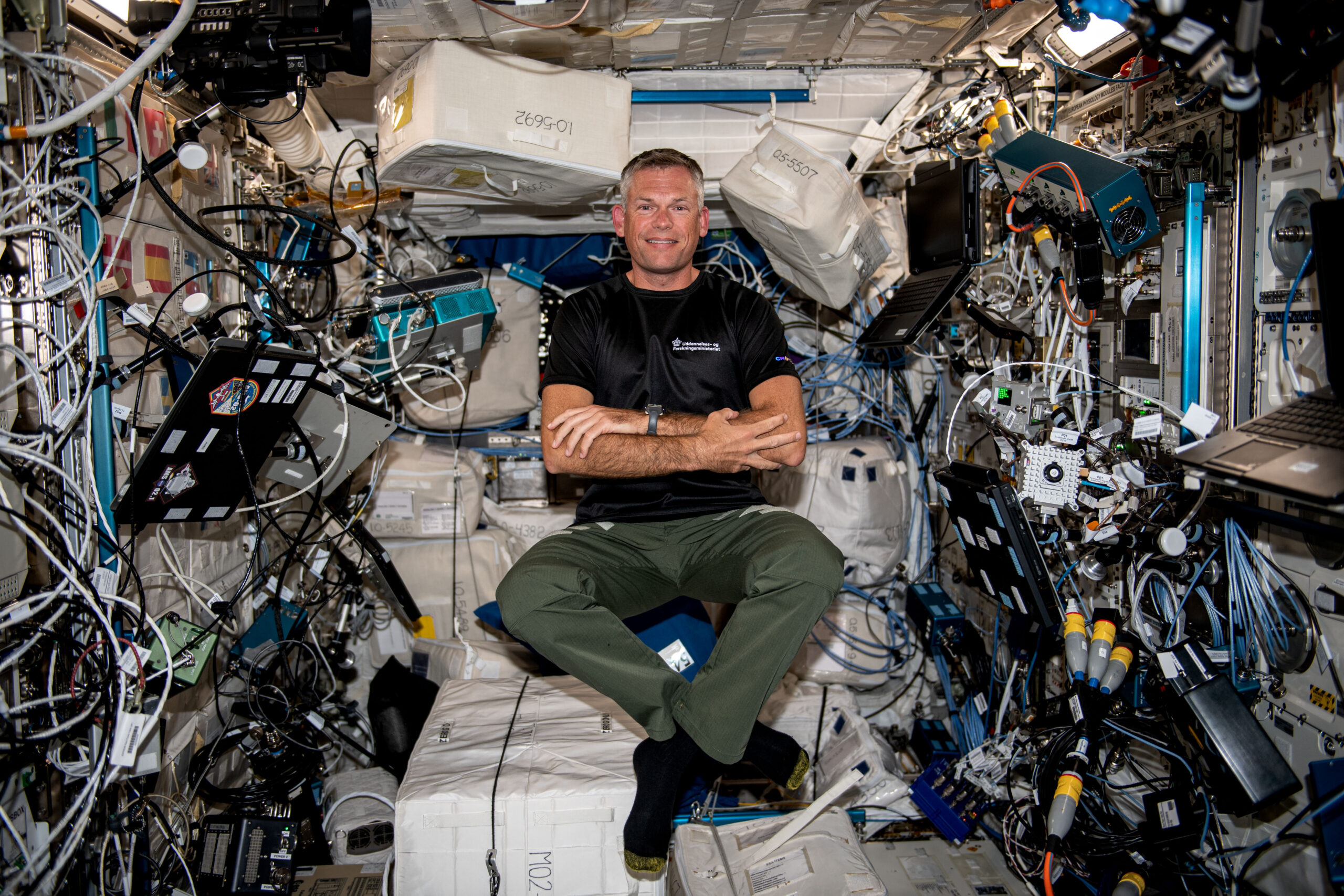
Expedition 70 will then begin as a seven-member crew, under Mogensen’s command, with a busy fall and winter ahead of them. Already berthed or docked at the ISS are Northrop Grumman Corp.’s NG-19 Cygnus and Russia’s Progress MS-23 and MS-24 cargo ships, the first slated to depart in late October, the others at the end of November and at some point in the February timeframe.
Interestingly, the U.S. Operational Segment (USOS) crew for the fall and winter consists of a Dane, a Japanese and, for the first time, an all-female U.S. presence. And that raises the tantalising prospect—”Crewmembers still TBD,” Mr. Navias told AmericaSpace—that at least one of the U.S. EVAs in October could be an all-female affair, picking up the baton from an earlier trio of spacewalks by Expedition 61’s Christina Koch and Jessica Meir between October 2019 and January 2020.
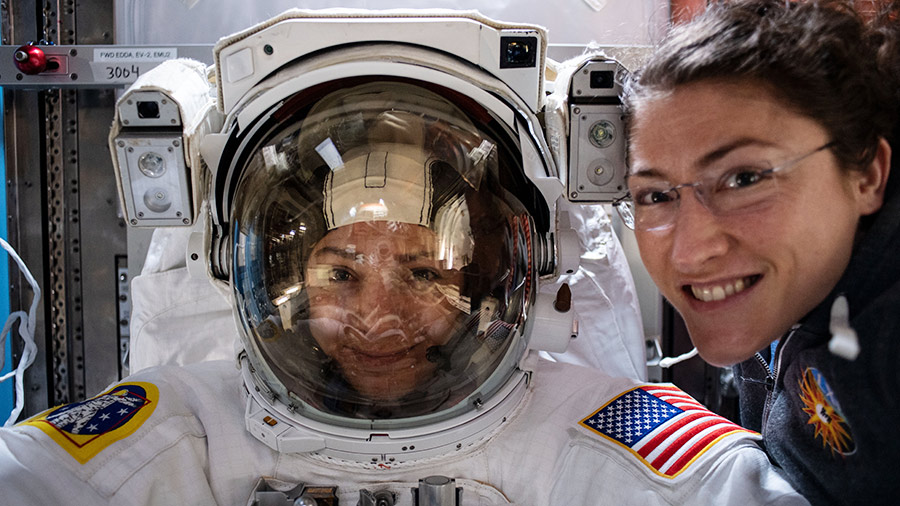
Another research-laden SpaceX Cargo Dragon (CRS-29) will arrive for a month-stay in early November, followed by Russia’s Progress MS-25 in early December and Northrop Grumman’s NG-20 Cygnus—launched, for the first time, by a Falcon 9—a couple of weeks ahead of Christmas. Moving into the New Year, Houston, Texas-based AxiomSpace, Inc., anticipates flying its Ax-3 crewed research mission in January, with Crew-8 expected to launch in February and Soyuz MS-25 in mid-March.
Also placed somewhere in that tight schedule is the long-awaited Crew Flight Test (CFT) of Boeing’s CST-100 Starliner, expected to fly no sooner than early March with NASA astronaut Barry “Butch” Wilmore and Sunita Williams. With the arrival of Crew-8’s quartet of NASA astronauts Matt Dominick, Mike Barratt and Jeanette Epps, together with Russian cosmonaut Aleksandr Grebyonkin, the Crew-7 quartet of Moghbeli, Mogensen, Furukawa and Borisov will return to Earth in late February after six months in orbit.
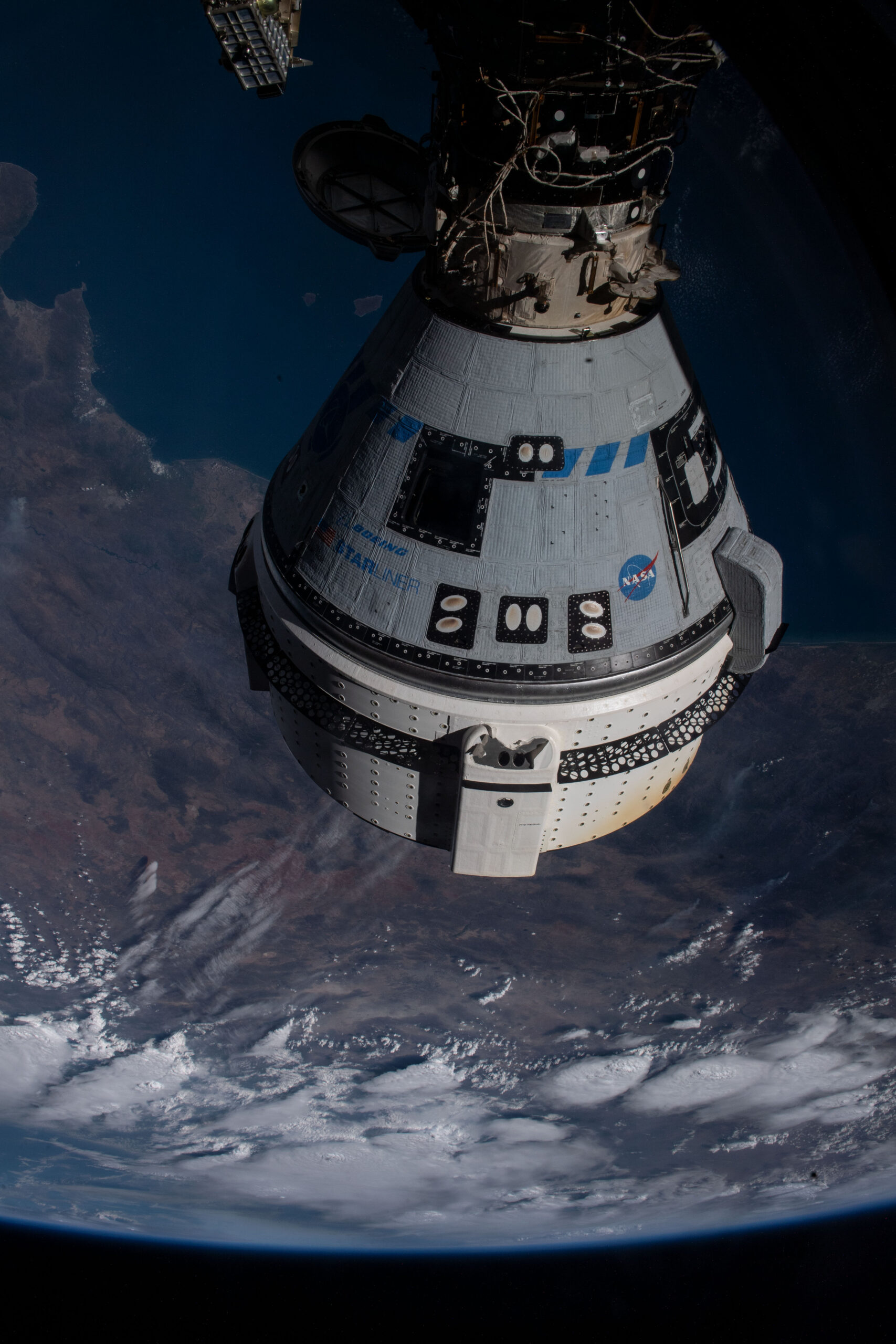
With Mogensen’s departure, command of the ISS will pass to Oleg Kononenko, who will lead Expedition 71 until his and Chub’s return to Earth after 375 days in September 2024. And O’Hara herself is slated to return aboard Soyuz MS-25 with Novitsky and Marina Vasilevskaya on about 25 March, wrapping up a 192-day stay on the ISS.
Interestingly, the station will have a pair of back-to-back Russian commanders moving from 2024 into 2025. Veteran cosmonaut Alexei Ovchinin—currently slated to lead Soyuz MS-26 in September 2024—will command Expedition 72 into the spring of 2025.




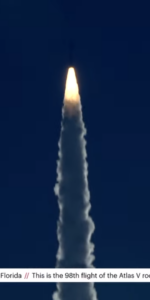
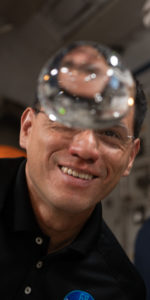
8 Comments
8 Pings & Trackbacks
Pingback:Record-Breaking Rubio to Roar Past One Year in Space Tomorrow - AmericaSpace
Pingback:Record-Breaking Rubio to Roar Past One Year in Space Tomorrow - SPACERFIT
Pingback:Record-Setting Rubio Returns Home, Completes Year-Plus Stay in Space - AmericaSpace
Pingback:Expedition 70 Crew to Enjoy Thanksgiving Dinner Aboard Space Station - AmericaSpace
Pingback:Expedition 70 Crew to Enjoy Thanksgiving Dinner Aboard Space Station - SPACERFIT
Pingback:Crew-8 Launch Realigns to Saturday, Six-Month Space Station Stay Ahead - SPACERFIT
Pingback:Crew-8 Heads for Space Station, Kicks Off Busy March for SpaceX - SPACERFIT
Pingback:Crew-8 Heads for Space Station, Kicks Off Busy March for SpaceX - AmericaSpace